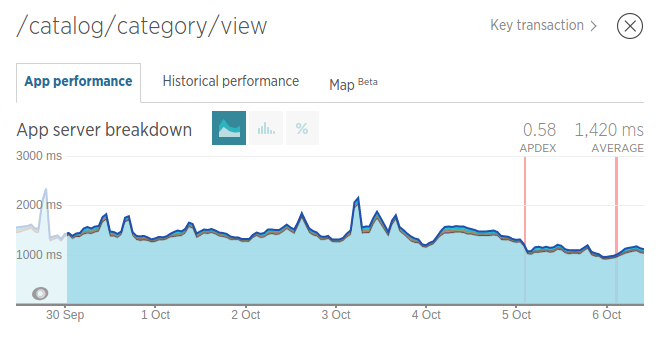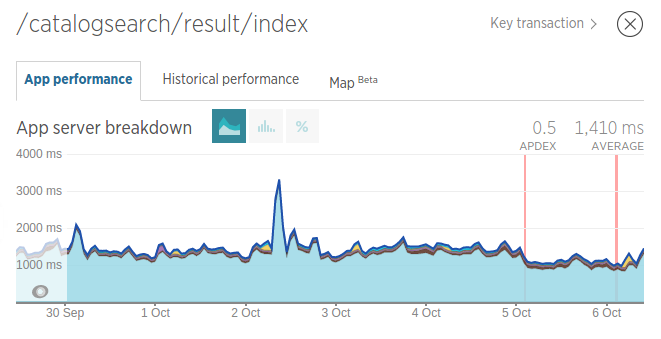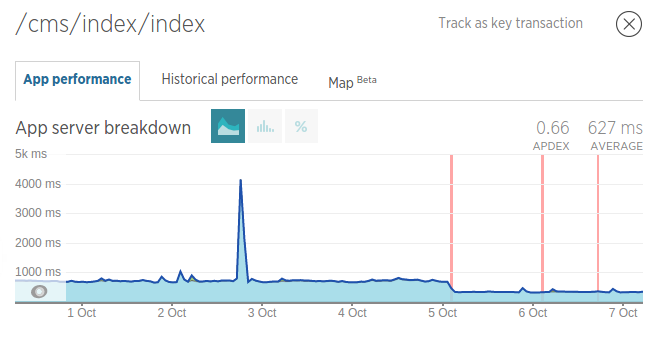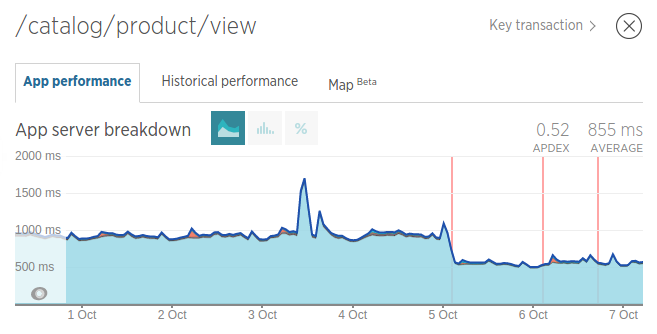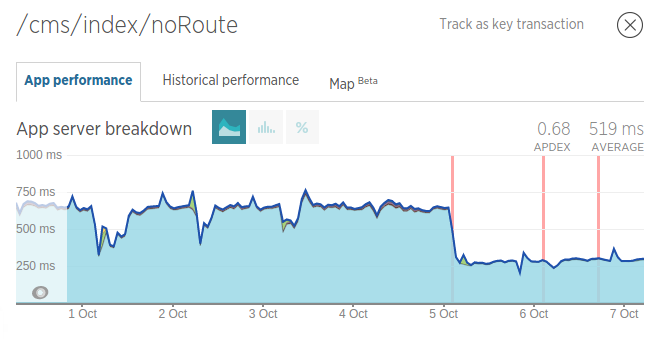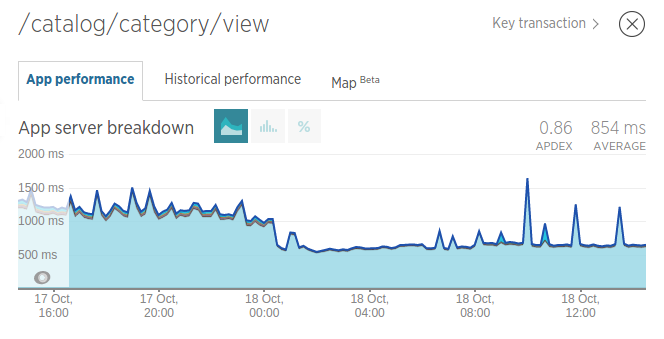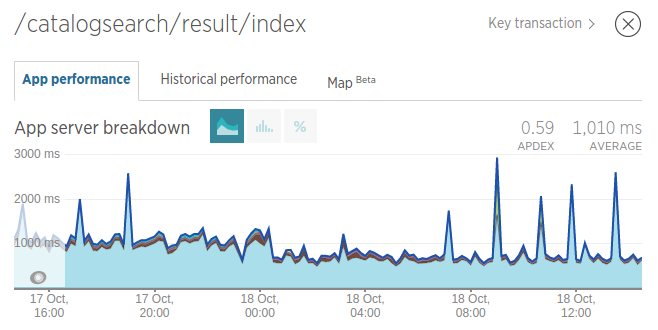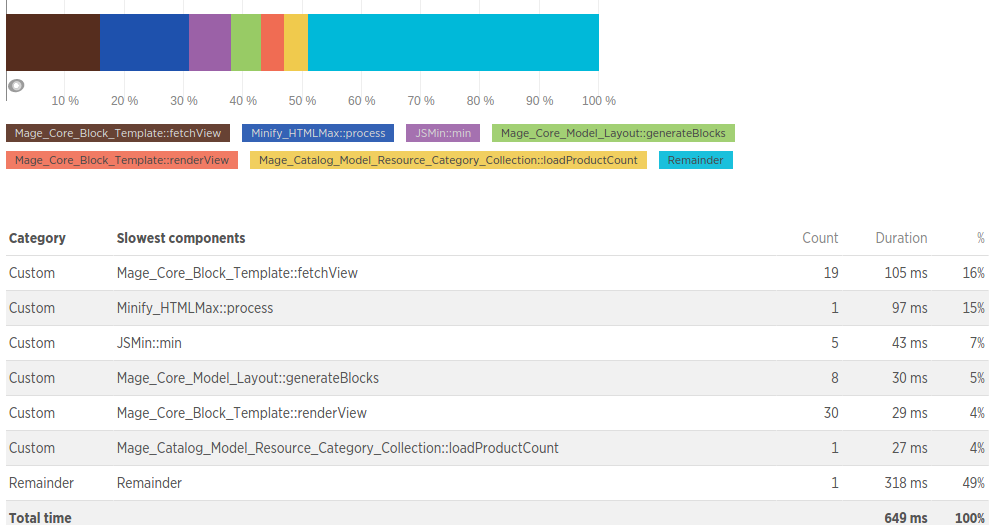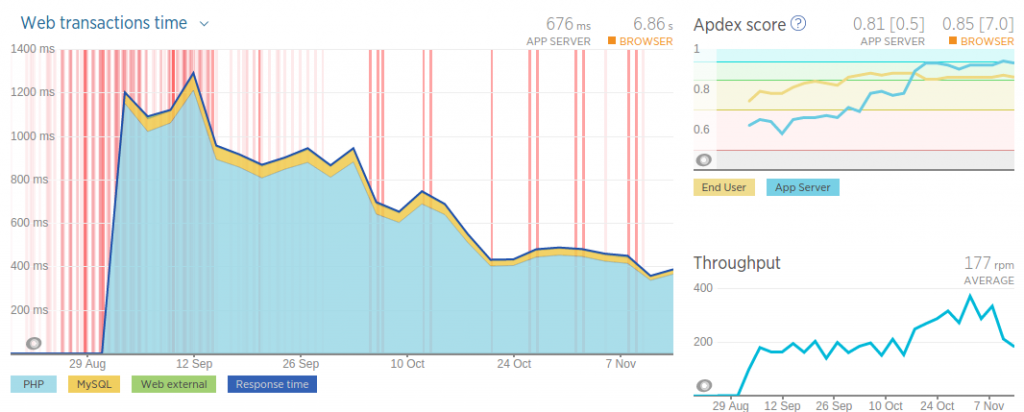I have been working on quite a highly visited magento store by South African standards. The task is to improve the performance and response times inclusing the magento server response and page load of the site as that had never been a high priority. Furthermore lots of custom development and dare I say it magento module and even core overrides were made to the site.
So here is a pragmatic guide to analysing a magento 1.9 site for performance and a guide on how to speed up the site, specifically magento server response.
Lots of Variables
One of the most difficult things is actually isolating problems. There are many factors to take into account and many reason as to why the site is slow. There are so many interconnected parts that may be the bottleneck. It could be server hardware, non-optimised or index database, bad modules, web server configuration, file system read and writes, external scripts, render blocking js, location of the server and many other things.
Page Load Time vs Server Response Time
A very important thing to understand is the difference between server response time and page load time. As the ways to fix the problems are different in their natures.
Page load time is the time it takes to download and display the entire content of a web page in the browser window (measured in seconds). MaxCDN Page load time
Server response time is the amount of time it takes for a web server to respond to a request from a browser. Varvy server response time
When you request the webpage, the server starts building the page by querying the database and any external services for data and then building the page. That is your server response. So server response time is actually a constituent or subset of page load time.
Finding out if your Magento server response is irregular
The hardest part of making any findings is using a benchmarking or testing tool that is consistent and that does not depend on your network speed or some other factor. The best thing I have found for the magento server response test is the built in magento profiler used in conjunction with the AoeProfiler, which is a tool that makes readibility of the profiler much easier. Also you want to host the site locally. Fabrizio Branca describes how to setup the Aoe profiler.
Pitting your site against a standard magento with sample data at the same version
If your site is responding locally on any page with a response time of greater than 2000 ms you can safely say that something is wrong.
If your response is not so high, then make sure your local site you are enhancing has cache off and test it against your local standard magento install with cache off. Also test with cache on and see if there is a dramatic difference (> 200ms)
If so you will need to profile your site as to why it has a slower server response
Profiling and Fixing your Magento Server Response
This is the most difficult part. So test your site against the standard magento with both cache on or both cache off, and test on the same pages. So wither home page/ cms page, product view page and category page.
Then expand the profiler and find any extra calls that are done on your site that aren’t done on the magento site. These are usually your bottlenecks. Also any big red blocks needs to be looked at in detail.
Now for the difficult part, you need to find out why these calls are made and best case remove these modules/inefficiencies. Second best is to fix these inefficiencies and also make sure that if cache is turned on and things are not caching you need to find you why.
Your first goal is to have similar server response times to the standard magento site.
The important thing to remember is everything after the server response is frontend and can be optimised, like stop render blocking js, minifying js and css and enahancing image load. The server response is the time where the user is waiting for content and is very important and recommended to aim for < 200ms.
Leveraging Cache
If cache is not turned on in your production site, you are losing a lot of the speed gains you should be getting. Just take note that cache needs to be warmed up so after clearing your cache folder var/cache the first request will be slow and subsequent request will be much faster.
The Cache settings are found at: System -> Cache Management
I have done a few tests on my local craptop…using the built in php server. Remember to server the site with php -S vanilla.dev:4444 router.php so that the links work. More info on this post.
Cache is the top one, uncached is below.
Home screen:
Category Page:
Product Page:
So caching will at its worst will double the speed of the site normally, running locally. You may find when deploying to production environments that usually have more resources than your local pc the gain may halve.
So a 600 ms gain, will only be 300 ms on production environments.
Be wary of your custom templates not being cached
If you have a custom block for example MyModule/Block/Page/Html/TopMenu.php to override the standard top menu, but you are not using a template file called topmenu.phtml and have not made the correct provisions for this it will not be cached. For example you go and call your file megamenu.phtml and call $this->setTemplate('megamenu/page/html/megamenu.phtml).
That can really catch you out especially if it on a template that is on every page.
To check your blocks that are being cached you can use another great tool by Aoe called AoeTemplateHints, it will give you allot more information about your blocks and templates and is particularly good when looking at caching.
Results from fixing the Menu that was not being cached
We found that the megamenu at the top of the site was never cached server side because the template, never enabled cache on initialisation of the block. We fixed this and deployed and the results are quite astounding.
We implemented the fix on October the 5th in the morning.
Category view the improvement varies because of another inefficient module on the page. The gain here was about 300ms – 400ms.
Search results improved about 300ms
CMS home page about 350ms, ignore the spike
Product view page improved by 400ms, just under half
The index page gains in excess of 400ms
So a huge and significant improvement in speed. Honing in on the 200ms server response time. But there is still more work to be done on certain pages.
Another slow module: Product badges and Panels
There was a piece of horrendously slow and badly architectured code:
- Is passing the product id to the template block, then retrieiving the entire product by Id a good way?
<?php echo $this->getChild('badges')->setData("product_id", $_product->getId())->toHtml() ?>
- Using a LIKE query for each product in the catalog list, and not using cache in the block.
<?php $productId = $this->getProductId(); if (!$productId) { if ($product = Mage::registry('product')) { $productId = $product->getId(); } } ?> <?php if ($productId): ?> <?php $product = Mage::getModel('catalog/product')->load($productId); $attributes = Mage::getResourceModel('catalog/product_attribute_collection')->addFieldToFilter('attribute_code', array('like' => 'badge_%'))->getItems(); foreach ($attributes as $attribute): ?> <?php if (!$product->getData($attribute->getAttributeCode())) continue; ?> <?php echo $this->getLayout()->createBlock('cms/block')->setBlockId($attribute->getAttributeCode())->toHtml(); ?> <?php endforeach; ?> <?php endif; ?>After fixing the catalog pages and search results are below:
Reports: Should you turn it off?
The magento reports observer does add some time to the product view page magento server response time…about 50 – 150ms from my local testing.
Right at the bottom of the image is OBSERVER: reports
There is a gist that gives you the instructions, but rather add those changes in config.xml: I have tested locally and it removes that time from
Is AppTrain Minify HTML CSS JS Making Server Response Slow?
As you can see The Apptrain Minify_HTML::process and JSMin::min methods are slowing down server response by about 22%.
Strangely these methods do not show up in the magento profiler, as a custom library is used.
After disabling the AppTrain Minify HTML CSS JS the html was larger but a few measily kilobytes but server response time gains ranged from 150ms to 450 ms. A staggering result. The verdict is Do not use Apptrain Minify HTML CSS and JS, it will slow down your site. Check the results below.
Minify enabled:
Product: 25.8 KB = 1.22s
Category: 24.8kb = 1.06s
Home: 21.2kb = 612ms
Minify Disabled:
Product: 28.4 Kb = 717ms
Category: 26.7kb = 814ms
Home: 22.6Kb = 479ms
Take homes
So Looking at the last 3 months, I have significantly decreased the average server response from about 1200ms to just over 400ms. So that is a 67% improvement. The apdex score has also increased significantly.
Stoked with that but the page load still needs a bit of an enhancement and using varnish cache could probably drop this significantly. Enhancing SSL and moving the server closer to the customers would increase that time to first byte.
Common Coding Mistakes and Making Magento Fly
There is a good slideshow showing silly mistakes and how to correct them, and making standard magento fly.
Enable PHP Zend OPCache
There is an excellent article from amsty that highlights that in the PHP accellerator debate PHP OpCache is the best thing to use. It also debunks the Percona vs MySQL debate, showing that it is much of a muchness.
There is a good tutorial specifying how to implement OpCache. I will implement and then test the results.
But this is enabled by default on PHP 5.6 and greater I think. It just requires some variable tweaking.
Server
Scaling Magento Slideshow
https://speakerdeck.com/kyleterry/scaling-magento-by-copious-inc
Good article on implementing HHVM
HHVM 4x Performance boost (Click bait?)
Magento and frontend optimisations
Resources
Here is a list of excellent resources to make sure your magento is flying
- Magento block caching tutorial and information
- Ivan Chepurnyi making your magento fly
- Magento Performance tweaks repo
- Product List Block Cache Repo
- Performance Magento Slideshare
Testing and Load Testing Resources (Speed Test Toolkit)
Varnish
The pinnacle of performance, in terms of getting < 10 ms response times is Varnish Cache.
Here is the repo, and a list of magento sites that use varnish can be checked. You will notice that first load may be normal magento times, but next load can be less than 15 ms.
Increase the Php memory limit to unlimited in .htaccess
Redis Cache
HHVM
Varnish
Nginx
OpCode Cache
Google Pagespeed Insights
Low Hanging Fruit
Caching
Flat catalog and product page







